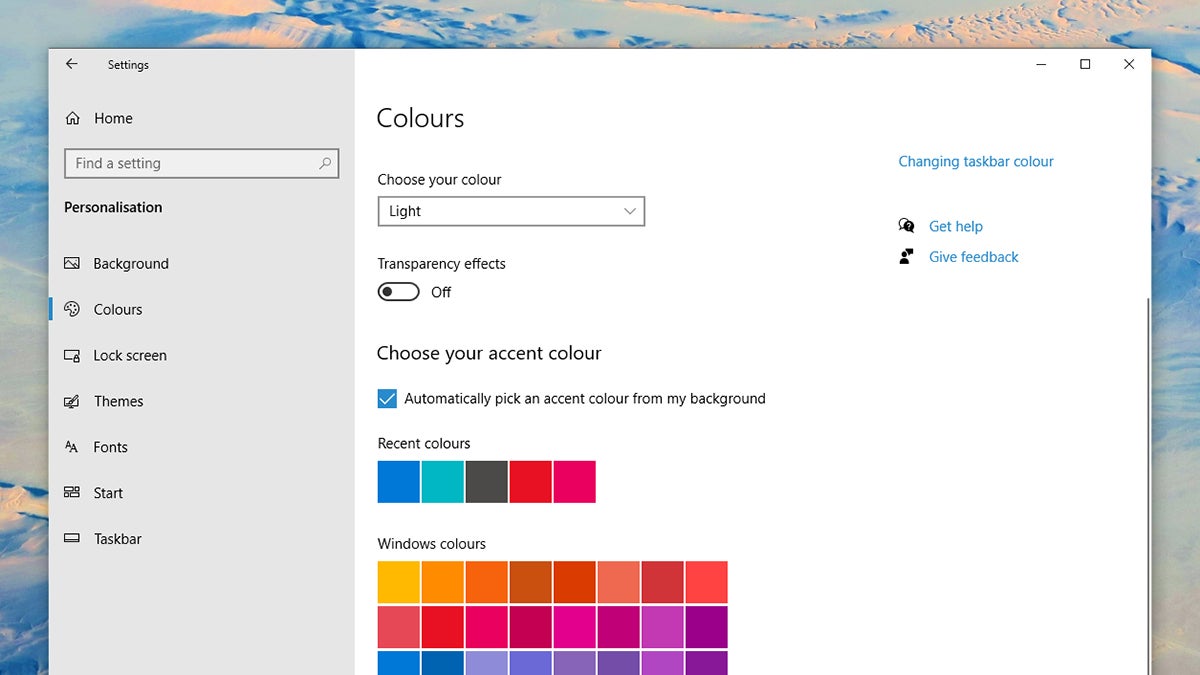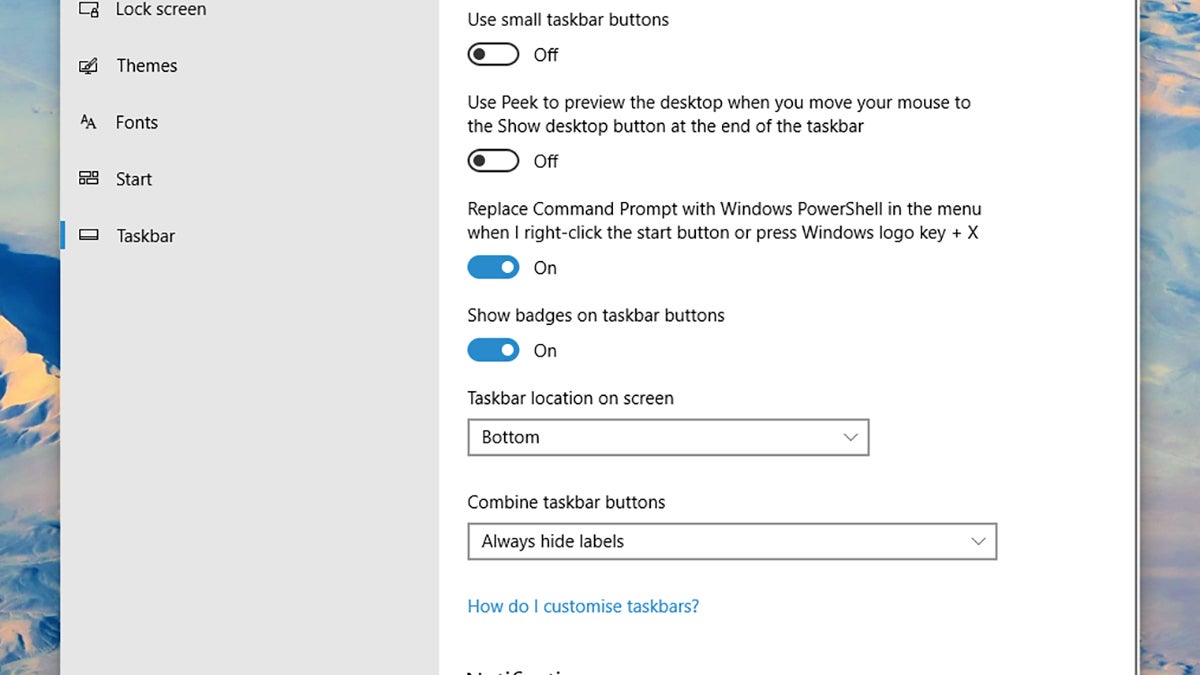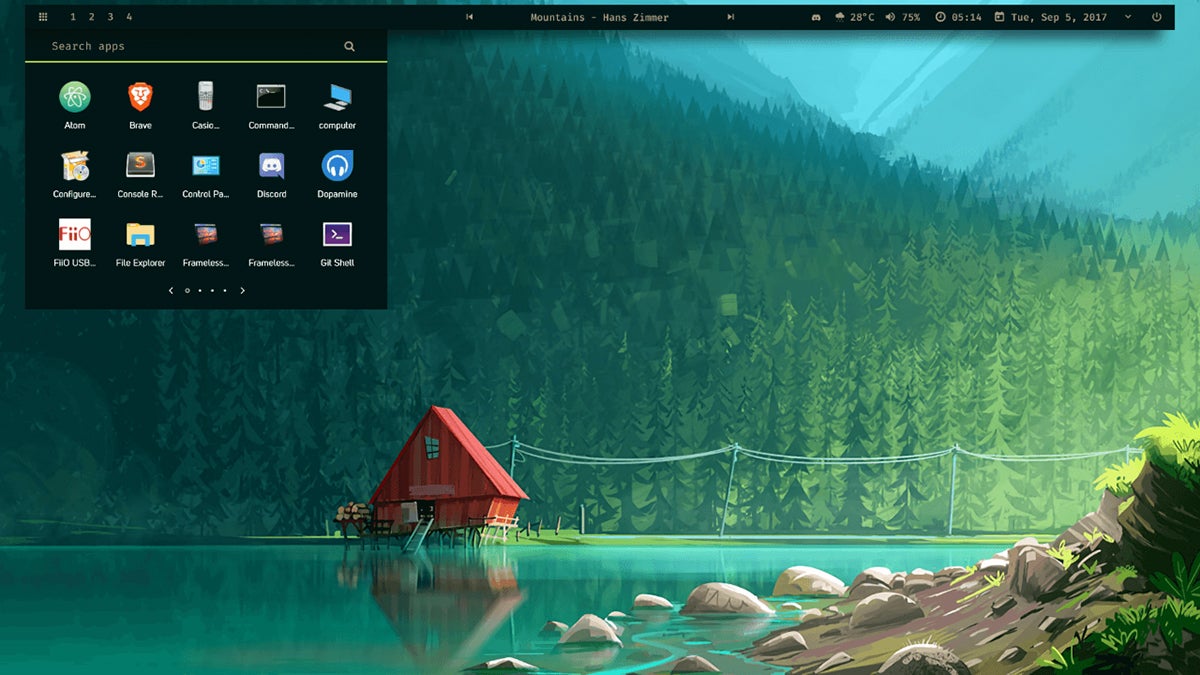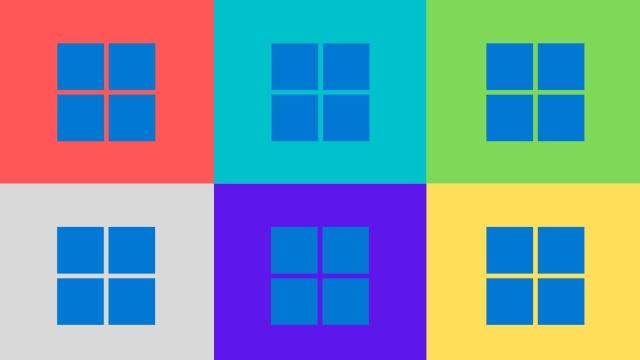For most of us, occasionally switching up the desktop wallpaper is about as adventurous as we get when it comes to Windows 11 customisation.
But there are in fact a multitude of ways to transform the operating system to perfectly customise its look — either through Windows’ own settings or with the help of a third-party utility. These are some of our favourite changes and tweaks for Windows 11 customisation.
1. Set a dynamic wallpaper
Your desktop backdrops don’t have to be static anymore. The free WinDynamicDesktop is here to give Microsoft’s operating system the same sort of dynamic wallpaper support that macOS has — it even ports the pictures bundled with Mojave and Big Sur for you to use (you can find more dynamic wallpapers here). As on a Mac, the idea is that the colours of your wallpaper shift as the day (and night) go by and WinDynamicDesktop lets you use the sunrise and sunset times of a specific location or custom timings that are preset by you.
2. Get a new desktop picture every day
Even if you’re never going to switch from Google search it’s fair to say that Microsoft does a very decent job with the photo backdrops that it finds for its Bing search engine, which cover a wide range of natural shots of landscapes and wildlife. You can get these same gorgeous images through the free Bing Wallpaper app provided by Microsoft, which also gives you the option of changing up your wallpaper with a new image every day. You need never complain about your operating system looking boring and familiar again.

3. Match your Windows theme to your wallpaper
Another trick for your wallpaper: If you really can’t decide on a colour accent to use in Windows, you can have it automatically change to whatever desktop picture you’re currently using. From Settings, click Personalisation then Colours, then tick the box marked Automatically pick an accent colour from my background. Windows is actually quite clever at determining a dominant colour from your wallpaper and there are some options further down the same screen to set how extensively the accent colour is used.
4. Use different settings for different monitors
While Windows does offer some basic options for setting up multiple monitors in different ways, you really need the freemium DisplayFusion to get the most out of a setup with more than one display. You can set separate wallpapers, screensavers and taskbars for each of your monitors, have monitors fade out when they’re not actively being used, manage windows across multiple displays more easily and save the position of your various open windows so you always know where everything is.

5. Customise icons and menus
The free Winaero Tweaker packs in a whole host of customisation options and tweaks for Windows 11 but we particularly like the way you can adjust the default sizing and the default spacing of icons and menus within the operating system — something Microsoft isn’t likely to allow direct access to anytime soon. Also in this packed piece of software you’ll find options for changing the speed of animations, adjusting the appearance of window title bars, switching out the default fonts Windows uses and more.
6. Edit hidden settings
If you want to get serious about your Windows customisations, then we’d recommend installing the free Ultimate Windows Tweaker. The software is able to manage all kinds of under-the-hood settings and tweaks, but we’re particularly interested in the Customisation screen. There are a wealth of options to play around with here, from taskbar icon sizes and notification area buttons to the folders that you get access to in File Explorer and the way that alerts appear on screen in Windows.
7. Move or hide the taskbar
The taskbar isn’t quite as fixed as you might have thought — right-click on a blank part of it and choose Taskbar settings. You can then use the Taskbar location on screen drop-down to move it to the top, left or right of the screen. If you’d like to get a bit more screen space when you’re not switching between programs, turn on the Automatically hide the taskbar in desktop mode and Automatically hide the taskbar in tablet mode toggle switches. You can also change the size of the taskbar buttons from this screen.

8. Change the size of the Start menu
It may have never crossed your mind that you can modify the look and size of the Start menu you open up every day, but it’s actually very straightforward: With the Start menu open, just click and drag the edges of it to change its size. You can also right-click on every tile on the right-hand side and choose Unpin from Start to leave yourself with a cleaner, more compact list of applications. To access more options for the Start menu, including the full screen mode, open up the Settings panel, then choose Personalisation and Start.
9. Put your own pictures on the lock screen
Don’t neglect the lock screen when it comes to Windows 11 customisation, because chances are you see a lot of it if you’re not on your computer around the clock. From the Settings screen in Windows, choose Personalisation and then Lock screen, then choose Slideshow under Background. This enables you to pick a folder of your own images (vacations, kids, pets) that the lock screen will cycle through. The options further down the screen let you specify which apps can show quick status information on the lock screen.

10. Skin the desktop
Rainmeter is a free Windows skinning tool that works a little bit like the alternative launchers you can get for Android: It can change almost every aspect of the interface, from the taskbar to the desktop wallpaper. There’s support for desktop widgets, floating toolbars and alternative clocks — it’s really up to the author of each skin to decide how it works and there are a whole host to choose from. Actually using Rainmeter is fortunately very easy, with built-in tutorials available to show you the way.
11. Control the layout
Microsoft’s very own suite of free PowerToys add some extra tricks to Windows, including a FancyZones utility that we want to highlight here: It essentially supercharges the existing window snapping feature in the operating system, letting you set up ‘zones’ of your own that windows automatically arrange themselves into. You could have four vertical columns, for example, or three horizontal rows, or two smaller zones above one larger one. The details are up to you and there are some preset templates to get started with.
If you’re interested in adding features onto Windows 11, check out our article on Windows 11 utilities.
This article has been updated since it was first published.
